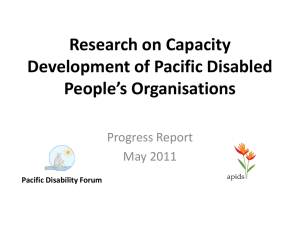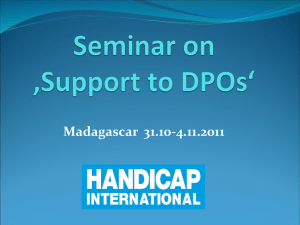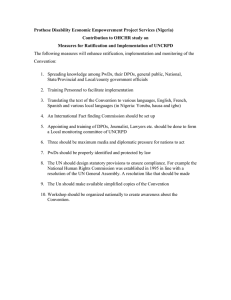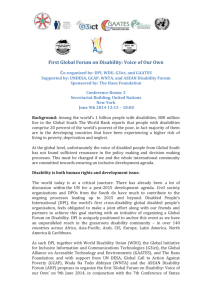Development Policy Operations
advertisement
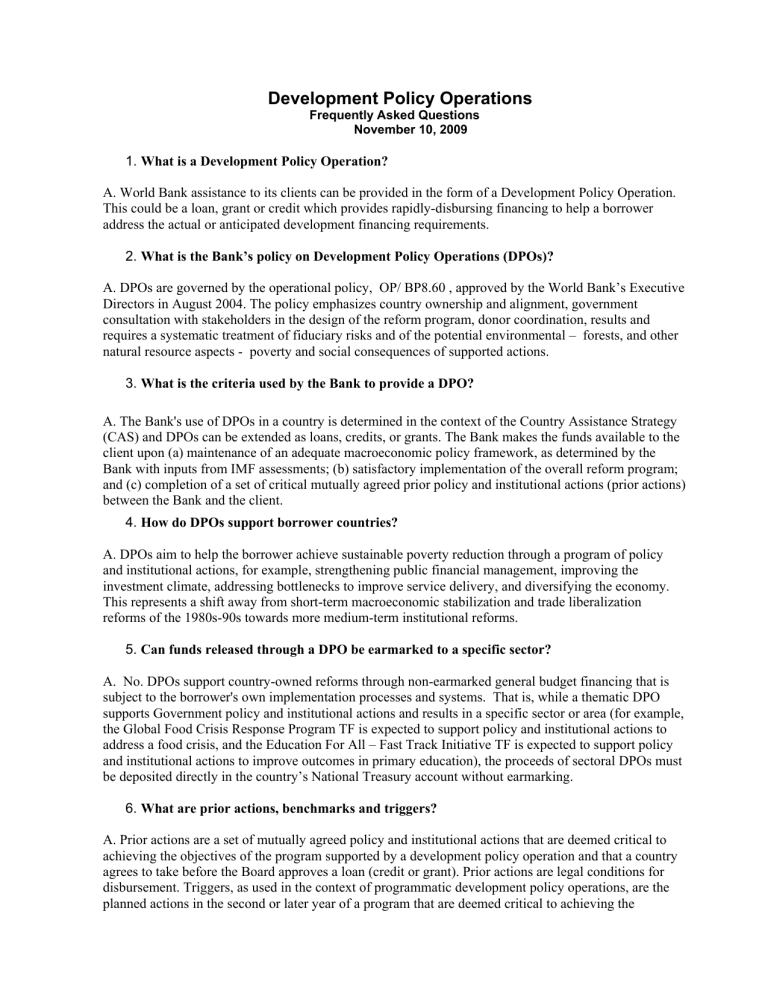
Development Policy Operations Frequently Asked Questions 1RYHPEHU, 2009 1. What is a Development Policy Operation? A. World Bank assistance to its clients can be provided in the form of a Development Policy Operation. This could be a loan, grant or credit which provides rapidly-disbursing financing to help a borrower address the actual or anticipated development financing requirements. 2. What is the Bank’s policy on Development Policy Operations (DPOs)? A. DPOs are governed by the operational policy, OP/ BP8.60 , approved by the World Bank’s Executive Directors in August 2004. The policy emphasizes country ownership and alignment, government consultation with stakeholders in the design of the reform program, donor coordination, results and requires a systematic treatment of fiduciary risks and of the potential environmental – forests, and other natural resource aspects - poverty and social consequences of supported actions. 3. What is the criteria used by the Bank to provide a DPO? A. The Bank's use of DPOs in a country is determined in the context of the Country Assistance Strategy (CAS) and DPOs can be extended as loans, credits, or grants. The Bank makes the funds available to the client upon (a) maintenance of an adequate macroeconomic policy framework, as determined by the Bank with inputs from IMF assessments; (b) satisfactory implementation of the overall reform program; and (c) completion of a set of critical mutually agreed prior policy and institutional actions (prior actions) between the Bank and the client. 4. How do DPOs support borrower countries? A. DPOs aim to help the borrower achieve sustainable poverty reduction through a program of policy and institutional actions, for example, strengthening public financial management, improving the investment climate, addressing bottlenecks to improve service delivery, and diversifying the economy. This represents a shift away from short-term macroeconomic stabilization and trade liberalization reforms of the 1980s-90s towards more medium-term institutional reforms. 5. Can funds released through a DPO be earmarked to a specific sector? A. No. DPOs support country-owned reforms through non-earmarked general budget financing that is subject to the borrower's own implementation processes and systems. That is, while a thematic DPO supports Government policy and institutional actions and results in a specific sector or area (for example, the Global Food Crisis Response Program TF is expected to support policy and institutional actions to address a food crisis, and the Education For All – Fast Track Initiative TF is expected to support policy and institutional actions to improve outcomes in primary education), the proceeds of sectoral DPOs must be deposited directly in the country’s National Treasury account without earmarking. 6. What are prior actions, benchmarks and triggers? A. Prior actions are a set of mutually agreed policy and institutional actions that are deemed critical to achieving the objectives of the program supported by a development policy operation and that a country agrees to take before the Board approves a loan (credit or grant). Prior actions are legal conditions for disbursement. Triggers, as used in the context of programmatic development policy operations, are the planned actions in the second or later year of a program that are deemed critical to achieving the outcomes of the program and that will be the basis for establishing the prior actions for later operations. In other words, triggers are expected prior actions of the next operation in a programmatic series. Benchmarks are the implementation progress markers of the program which describe the content and results of the government's program in areas monitored by the Bank. Triggers and benchmarks are not legal conditions for disbursement. 7. How does the Bank monitor results on the ground and the impact of DPOs? All DPOs have an associated results framework matrix which outlines the objectives of the program of reforms being supported, the operation’s expected results accompanied by baselines, targets, and monitoring indicators to supervise and monitor program implementation. An ex-post evaluation as to whether a DPO achieved its intended development objectives is done through an Implementation Completion and Results Report (ICR). Some examples of the impact of DPOs include – Bangladesh, where a $130 million DPO financed through an IDA credit supported the Government’s program to expand some of the existing safety net programs and enhance food security. In Haiti a grant helped maintain macroeconomic and social stability by ensuring that the government had adequate resources to continue providing much needed social and infrastructure services to the population, especially the poor. In Djibouti, a Food Crisis DPL supported government actions to channel direct support to the households of the most vulnerable population and to reduce taxes on basic food items. In Colombia, the government recognized during the DPL consultations conducted in March 2009 that Bank support raises the profile of the reform program under implementation. Countries like Cote d’Ivoire, Liberia, and Togo have sought Bank support to implement credible reforms in the areas of governance and macroeconomic stability with the objective of restoring a track record of performance which would allow donors to re-engage. 8. Do DPOs consider the likely social and distributive impacts of the reforms supported by the Bank? A. During preparation stages of a DPO, the policies supported by the operation are reviewed with the objective of identifying whether they are likely to have any significant poverty and social impacts. If so, Bank staff summarize analytical knowledge about those impacts and the borrower’s systems for mitigating negative impacts and enhancing positive impacts in the program document. If there are significant gaps in the borrower’s systems, the program document describes how such gaps are to be filled before or during program implementation. The Bank has updated its Good Practice Note on Using Poverty and Social Impact Analysis to Support Development Policy Operations for guidance which is available at www.worldbank.org . 9. Are documents related to development policy operations public i.e. are they disclosed? A. The Program Documents of all DPOs and the Government’s Letter of Development Policy (LDP) are published after Board consideration of the operation unless Executive Directors decide otherwise. ###
